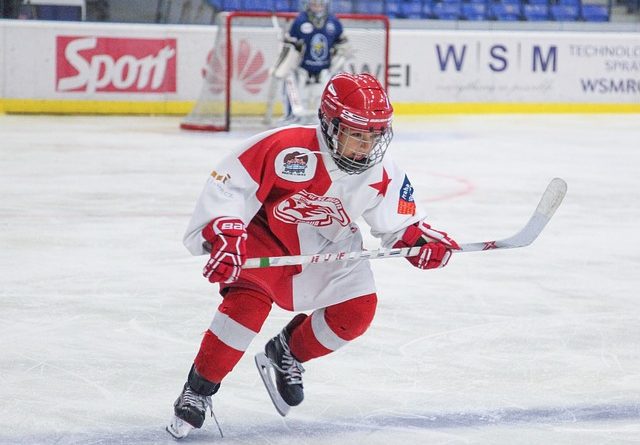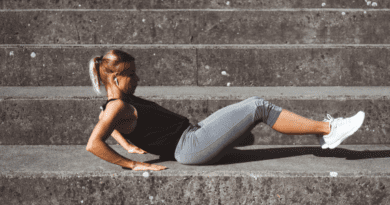Free Hockey Training Guide: Train for Results!
Ready to elevate your game? This free hockey training guide delivers a complete blueprint for building the power, speed, and resilience you need to dominate on the ice.
Success in hockey demands intense hard work and dedication. As a certified strength and conditioning coach with decades of experience training athletes, I’ve seen firsthand how a structured off-ice program can be the ultimate game-changer. Research consistently shows that off-ice conditioning, like plyometrics and strength training, has a direct, measurable impact on skating speed and power.
This guide cuts through the noise to give you the actionable workouts and injury prevention strategies that deliver real results. Let’s build a stronger, faster, and more durable player.
Disclaimer: This article is for informational purposes only and is not meant to treat or diagnose any condition. It is recommended that you speak with your doctor before starting any exercise program, changing your daily nutrition, or adding any supplements to your regimen.
Table of contents
Key Takeaways
- Train for Power, Not Just Size: Hockey success relies on explosive power, speed, and agility rather than sheer muscle mass. Your off-ice training should reflect this with plyometrics and compound strength movements.
- Smart Prevention Reduces Injuries: Head, shoulder, and knee injuries are incredibly common in hockey. A proper dynamic warm-up, flexibility work, and targeted strength training are your best defense against missing ice time.
- Periodization is Crucial: Your training must adapt to the season. Off-season is for building a foundation of strength and skill, pre-season sharpens conditioning, and in-season focuses on maintenance and recovery.
- Treat Injuries with Modern Methods: The old RICE (Rest, Ice, Compression, Elevation) method is being updated. Newer protocols like PEACE & LOVE or MEAT emphasize controlled movement and optimized loading to promote faster, more effective healing for many soft tissue injuries.
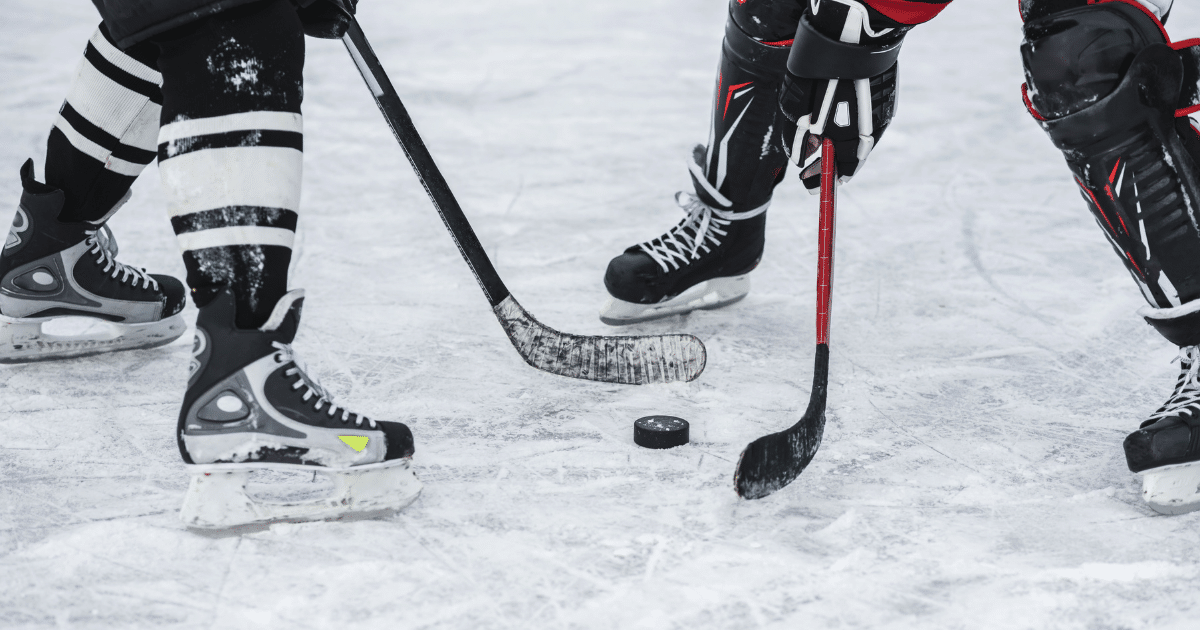
Chapter 1: Free Hockey Training Guide Introduction
Have you ever wondered what truly separates good hockey players from great ones? It’s the relentless dedication to training both on and off the ice. An explosive first step, a powerful shot, and the ability to outlast your opponent in the third period are all forged in the gym.
This free hockey training guide is your roadmap. We’ll cover the essential physical qualities you need and how to build them effectively and safely.
What Are the Core Physical Demands of Hockey?
To build a successful training program, you first need to understand the unique demands of the sport. Hockey is a game of high-intensity, intermittent bursts of speed and power. The average NHL player’s shift lasts only 30-80 seconds, but it’s played at maximum effort with short recovery periods.
- Power: The foundation of a hard shot and explosive acceleration is power. This is different from pure strength. Power is the ability to generate force quickly, which is why exercises like plyometric box jumps are so critical.
- Speed and Agility: Hockey is rarely played in a straight line. Your training must include multi-directional movements, like lateral shuffles and crossover drills, to improve your agility and change-of-direction speed on the ice. Off-ice sprint and agility drills have been shown to directly transfer to on-ice skating performance.
- Strength and Stability: While muscle size (hypertrophy) isn’t the main goal, functional strength is vital. A strong core, powerful legs, and stable hips are essential for winning puck battles, maintaining balance, and transferring energy efficiently from your skates through your stick.
Chapter 2: Injury Prevention
Every player knows that injuries are a frustrating part of the game. While you can’t prevent every accident, a smart approach to training can significantly reduce your risk of common setbacks. This hockey training guide prioritizes keeping you healthy and on the ice.
What Are the Most Common Hockey Injuries?
Research from organizations like the International Ice Hockey Federation highlights specific areas of concern. A multi-year study of major tournaments found that head and face injuries were the most frequent (nearly 40% of all injuries), followed by lower-body issues like knee sprains and upper-body injuries, particularly to the shoulder. A 2025 study using U.S. emergency department data also noted a post-pandemic rise in head and shoulder trauma among youth players.
- Head/Face: Lacerations, fractures, and concussions are common.
- Shoulder: AC joint sprains and dislocations often result from collisions.
- Knee: MCL sprains are particularly common due to the skating motion and contact.
- Groin/Hip: Overuse strains are frequent due to the repetitive, powerful movements of skating.
- Ankle: Sprains can occur from awkward falls or contact.
How Can You Prevent Common Hockey Injuries?
Your best defense is a proactive offense. Integrating these key habits into your routine is non-negotiable for longevity in the sport.
- Dynamic Warm-up: Skip the old-school static stretching before games. Research overwhelmingly shows that a dynamic warm-up, which involves active movements like leg swings, lunges, and torso twists, is superior for preparing your body for intense activity and reducing injury risk. A good routine takes 5-10 minutes and primes your muscles, joints, and nervous system for peak performance.
- Targeted Strength Training: Strengthening the muscles around vulnerable joints, like the hips, core, and shoulders, provides crucial stability. Exercises like lateral lunges, planks, and band pull-aparts are essential.
- Flexibility and Mobility: Focus on improving mobility in your hips and shoulders after your workouts. Using tools like a foam roller can help release muscle tightness and improve your range of motion, which is key for a powerful and efficient skating stride.
- Proper Equipment: Always wear a certified helmet and full-face protection. Injuries to the face from a high stick or a deflected puck are preventable.
What Should You Do If an Injury Occurs?
For years, the standard advice for soft-tissue injuries was the RICE method: Rest, Ice, Compression, and Elevation. While still useful for immediate pain and swelling management, modern sports medicine often advocates for a more active approach to recovery.
Protocols like PEACE & LOVE (Protect, Elevate, Avoid anti-inflammatories, Compress, Educate & Load, Optimism, Vascularisation, Exercise) or MEAT (Movement, Exercise, Analgesia, Treatment) are gaining favor. The key difference is the emphasis on early, controlled movement to stimulate blood flow and promote better tissue healing, rather than prolonged immobilization. Always consult a doctor or physical therapist for a proper diagnosis and treatment plan.
Chapter 3: The Hockey Training Guide Workout
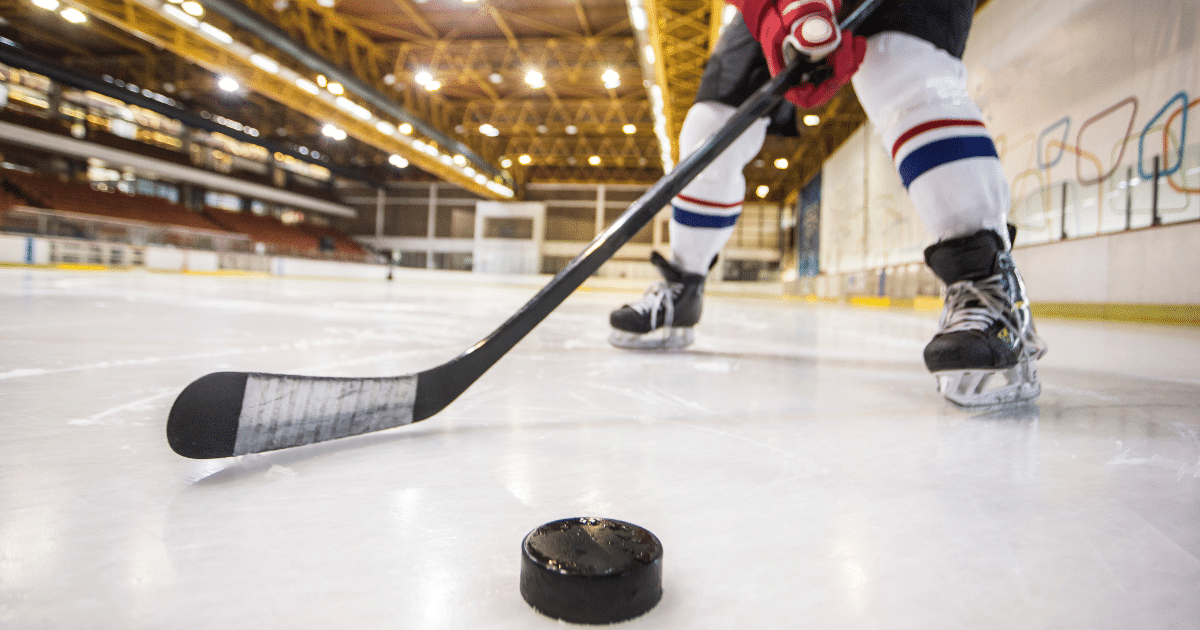
This section of our hockey training guide provides a structured, year-round workout plan. The key to long-term progress is periodization, meaning your training changes based on whether you’re in the off-season, pre-season, or in-season.
Dynamic Warm-Up (Perform Before Every Workout)
Dedicate 5-10 minutes to a dynamic warm-up before every session. This gets the blood flowing and prepares your body for the work ahead. Perform each movement for 30 seconds or 10-15 yards.
- Jumping Jacks
- High Knees
- Butt Kicks
- Walking Lunges with Torso Twist
- Leg Swings (Forward and Sideways)
- Arm Circles
Hockey Workout Program by Season
The following tables outline your training split. Focus on proper form over heavy weight. As you get stronger, you can progressively increase the weight or resistance.
Off-Season (4-5x per week)
This is your prime opportunity to build a strong foundation. The goal is to develop strength, power, and correct any imbalances. According to USA Hockey’s development program, this is when athletes aged 15 and up can engage in serious, comprehensive training.
| Exercise | Sets x Reps | Why It Works for Hockey |
|---|---|---|
| Phase 1 (Weeks 1-4) | 2x per week | Build foundational strength. |
| 3-Way Lunge | 3 x 12 | Develops leg strength and stability in multiple planes of motion, mimicking skating. |
| Dumbbell Bench Press | 3 x 12 | Builds upper body pushing strength for battles along the boards. |
| Lat Pulldowns | 3 x 12 | Strengthens the back for a powerful shot and improved posture. |
| Dumbbell Shoulder Press | 3 x 12 | Develops shoulder strength for shooting and checking. |
| Crunches on Stability Ball | 3 x 20 | Improves core stability, which is crucial for balance and power transfer. |
| Lateral Shuffle | 2 x 15 yds | Enhances lateral agility and defensive movement. |
| Carioca Agility Drill | 3 x 15 yds | Improves footwork, coordination, and hip mobility. |
| Phase 2 (Weeks 5-8) | 3x per week | Increase intensity and focus on power. |
| Crossover Step-Ups | 3 x 12 | Simulates the crossover skating motion, building hip strength and power. |
| 1-Arm Dumbbell Row | 3 x 12 | Builds unilateral back strength, essential for shooting and puck battles. |
| Dumbbell Lateral Raises | 3 x 12 | Strengthens the deltoids for shoulder stability and injury prevention. |
| Trunk Rotations w/ Cable | 3 x 15 | Develops rotational core power, the engine behind a hard slap shot. |
| Lateral Skaters Jump | 3 x 12 | A plyometric drill that directly translates to explosive lateral pushes on the ice. |

Pre-Season (3-4x per week, ~5 weeks out)
The focus now shifts to converting that strength into sport-specific power and endurance. The intensity increases, and movements become more explosive.
| Exercise | Sets x Reps | Why It Works for Hockey |
|---|---|---|
| Push-Up w/ Clap | 3 x 8 | Develops explosive upper body power for quick shots and powerful checks. |
| Barbell Rows | 3 x 8 | Builds a strong back, essential for pulling power in shooting and face-offs. |
| Close-Grip Bench Press | 3 x 8 | Targets the triceps, adding power to your shot release. |
| Squat Jumps | 4 x 10 | A key plyometric exercise for increasing vertical power and first-step quickness. |
| Single Leg Bounding | 3 x 10 | Improves single-leg explosive power and balance, critical for skating strides. |
In-Season Maintenance (1-2x per week)
During the season, the goal is to maintain the strength and power you’ve built without causing excessive fatigue. A 2020 study in the Journal of Sports Sciences recommends 2-3 shorter off-ice sessions per week to maintain fitness and aid recovery. Listen to your body and adjust based on your game and practice schedule.
| Exercise | Sets x Reps | Why It Works for Hockey |
|---|---|---|
| Bench Press | 2 x 12 | Maintains upper body strength. |
| Lat Pulldowns | 2 x 12 | Maintains back strength and postural support. |
| Dumbbell Shoulder Press | 2 x 12 | Keeps shoulders strong and stable. |
| Hamstring Curl | 2 x 12 | Helps prevent hamstring strains, a common hockey injury. |
| Dumbbell Reverse Flyes | 2 x 12 | Strengthens the upper back to counteract the forward posture of skating. |
Post-Workout Cool-Down and Stretching
After every workout, spend 5-10 minutes on static stretching. This helps improve flexibility and aids in recovery. Hold each stretch for 20-30 seconds without bouncing.
- Posterior Shoulder Stretch: Gently pull one arm across your chest.
- Forearm Extensor/Flexor Stretch: Extend your arm and gently pull your fingers back, then point them down and pull back.
- Figure 4 Hamstring Stretch: Lie on your back, cross one ankle over the opposite knee, and pull the leg toward you.
- Stork Quadriceps Stretch: Stand and pull your heel toward your glute.
- Calf Stretch: Press against a wall with one leg back and heel down.
- Spinal Twist: Lie on your back and gently drop both knees to one side.
Chapter 4: Conclusion of the Hockey Training Guide
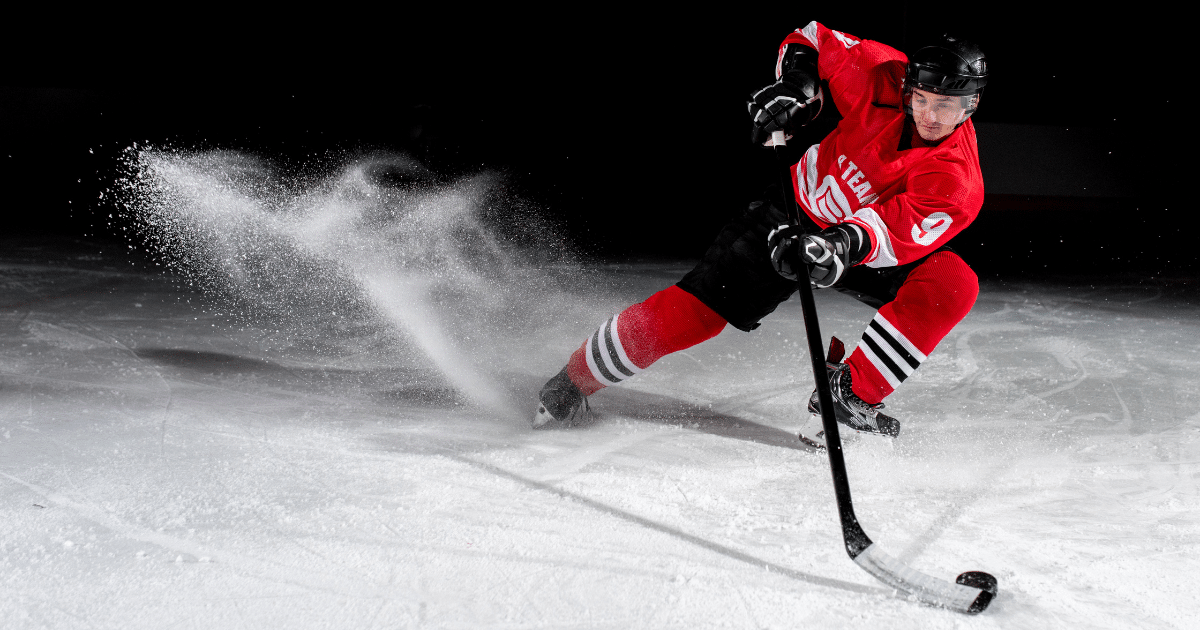
It’s time to wrap up this hockey training guide. As you commit to this program, you will see tangible results on the ice. Your shot will have more velocity, your first step will be quicker, and you’ll feel stronger in the corners.
Consistency is your greatest asset. Sticking with the plan, especially during the demanding off-season, is what separates you from the competition. Remember that playing hockey is also a fantastic form of cardio, so keep hitting the ice for scrimmages and stick-and-puck sessions to keep your skills sharp.
Success is earned through hard work. Use this guide as your foundation, train with purpose, and never let anyone outwork you. Give yourself every chance to be great.
Hockey Training Guide FAQs
How many days a week should I train for hockey?
The ideal frequency depends on the season and your age. For players 15 and older, a common recommendation is 4-5 off-ice sessions per week in the off-season, 3-4 in the pre-season, and 1-2 maintenance sessions during the season to stay fresh for games.
What should I eat before and after a hockey game?
Nutrition is key to performance. Aim for a meal rich in complex carbohydrates and moderate in protein 2-3 hours before a game (e.g., whole grain pasta with chicken). Within 30 minutes to 2 hours after a game, consume a snack or meal with a mix of carbs and protein (like a smoothie or yogurt) to replenish energy stores and aid muscle recovery.
What are the best off-ice drills for skating speed?
To improve speed, focus on explosive power and leg strength. Top exercises include squat jumps, box jumps, lateral skater jumps, and sprints. Many players on forums like Reddit also swear by high-intensity interval training (HIIT) on a stationary bike and sled drags to build power.
Can I just play hockey to get in shape?
While playing is excellent cardio, a dedicated off-ice strength and conditioning program is necessary to maximize performance and prevent injuries. Off-ice training builds the raw power and stability that you then apply to on-ice skills, helping you become a more dominant and durable player.
RELATED: Soccer Training Guide — Help Improve Your Game!


*Disclosure: This article may contain affiliate links or ads, which means we earn a small commission at no extra cost to you if you make a purchase through these links. These commissions help support the operation and maintenance of our website, allowing us to continue producing free valuable content. Your support is genuinely appreciated, whether you choose to use our links or not. Thank you for being a part of our community and enjoying our content.
PLEASE CONSIDER SHARING THIS ON YOUR SOCIAL MEDIA TO HELP OTHERS LEARN MORE ABOUT THIS TOPIC.


